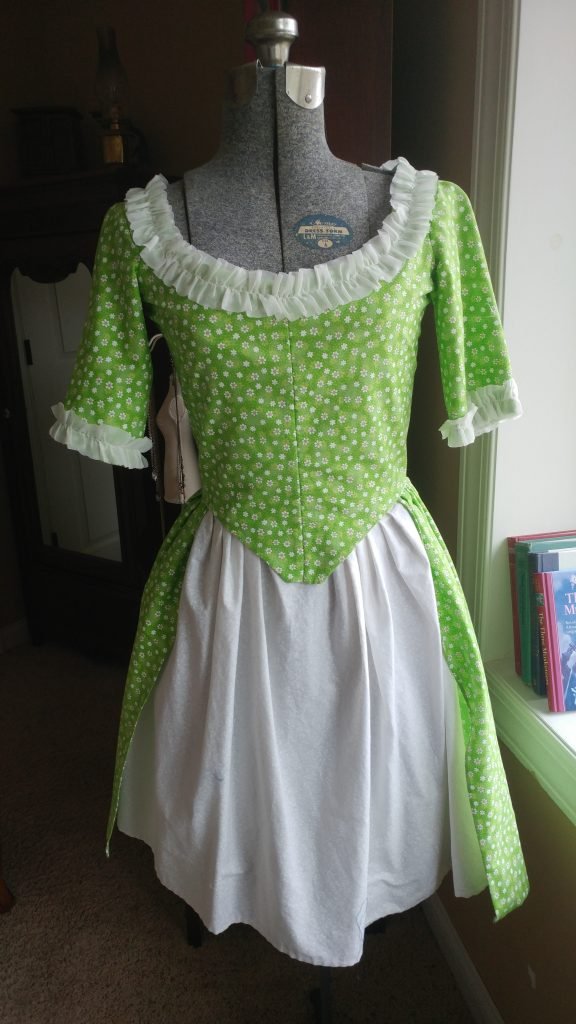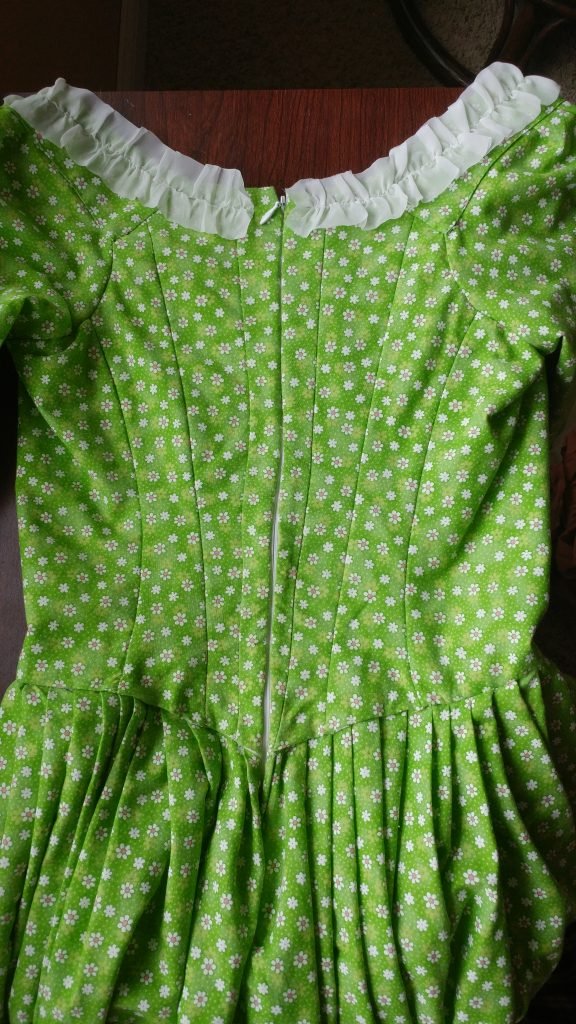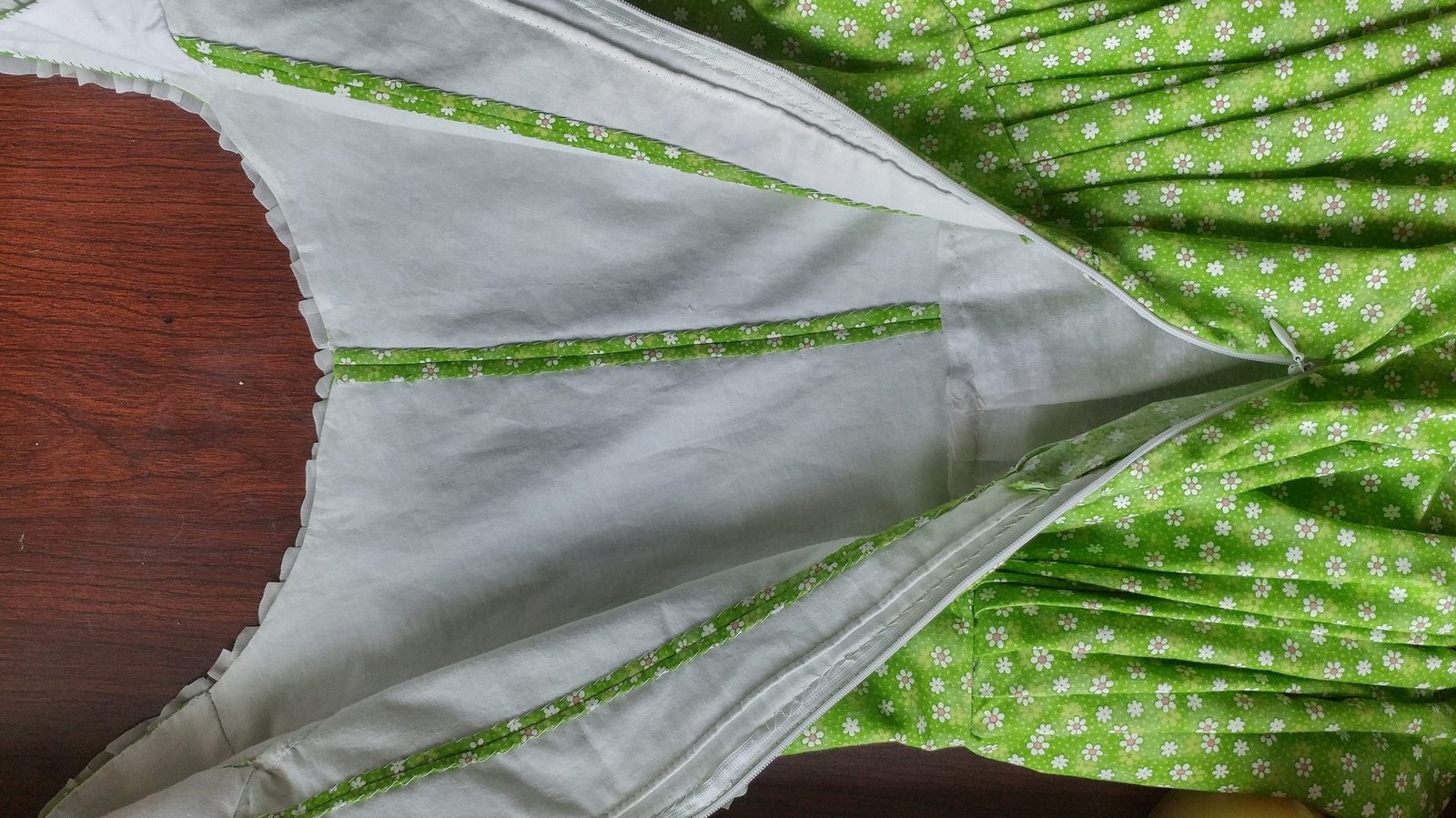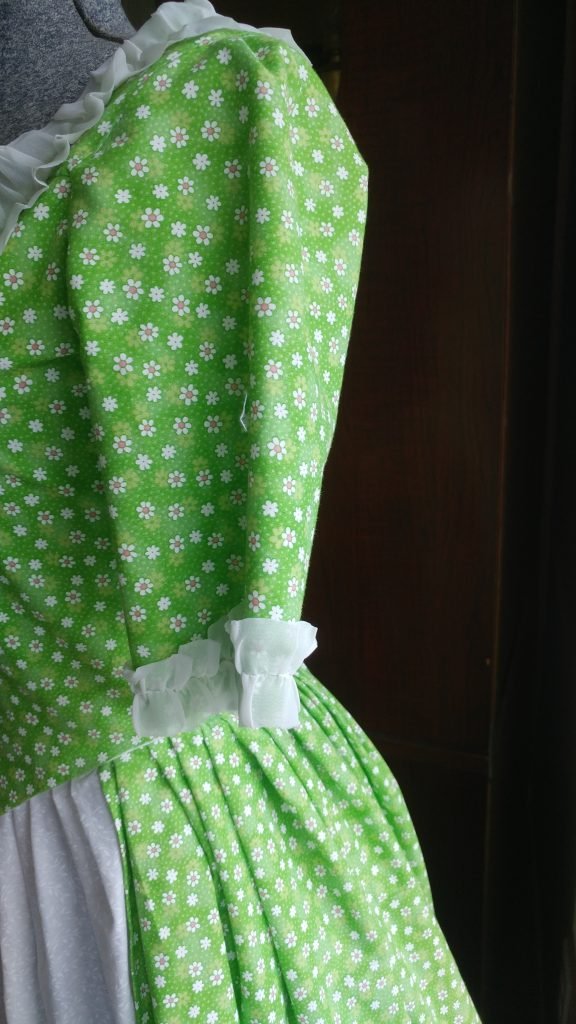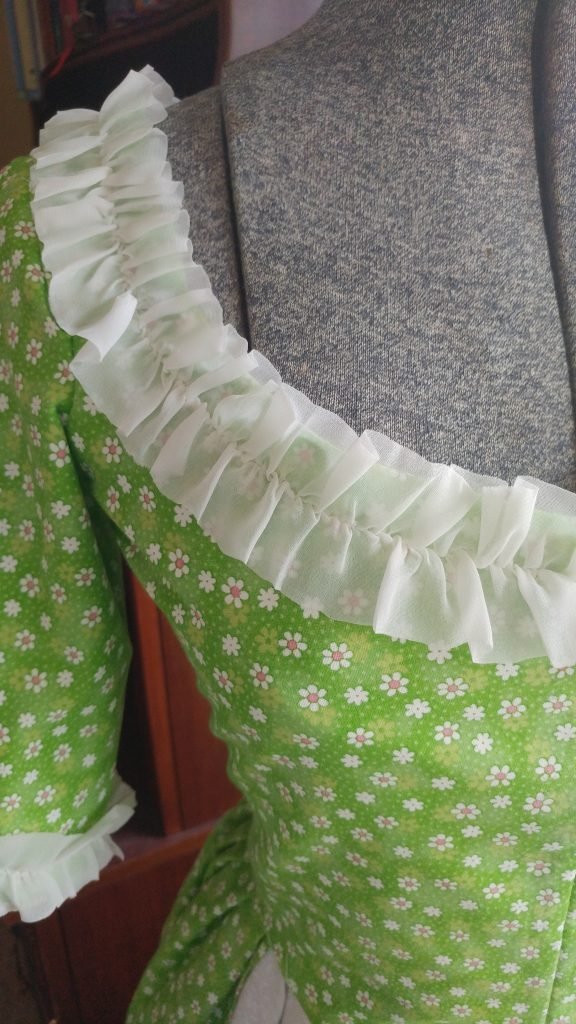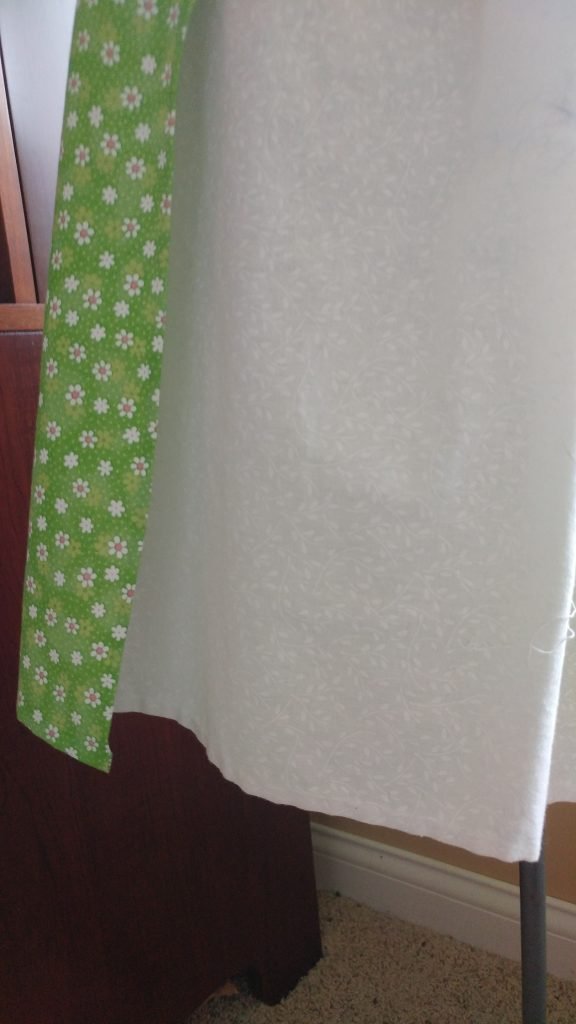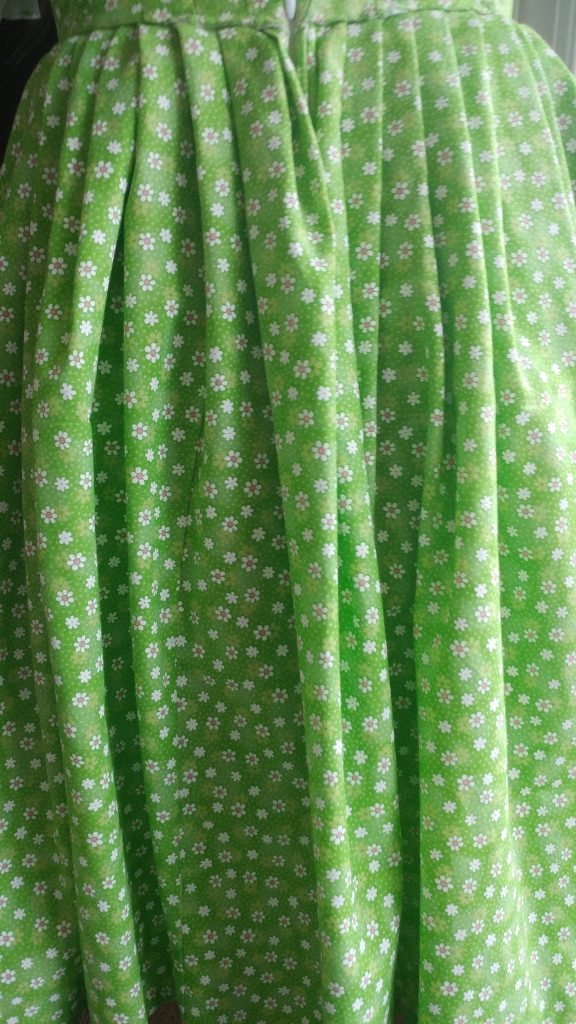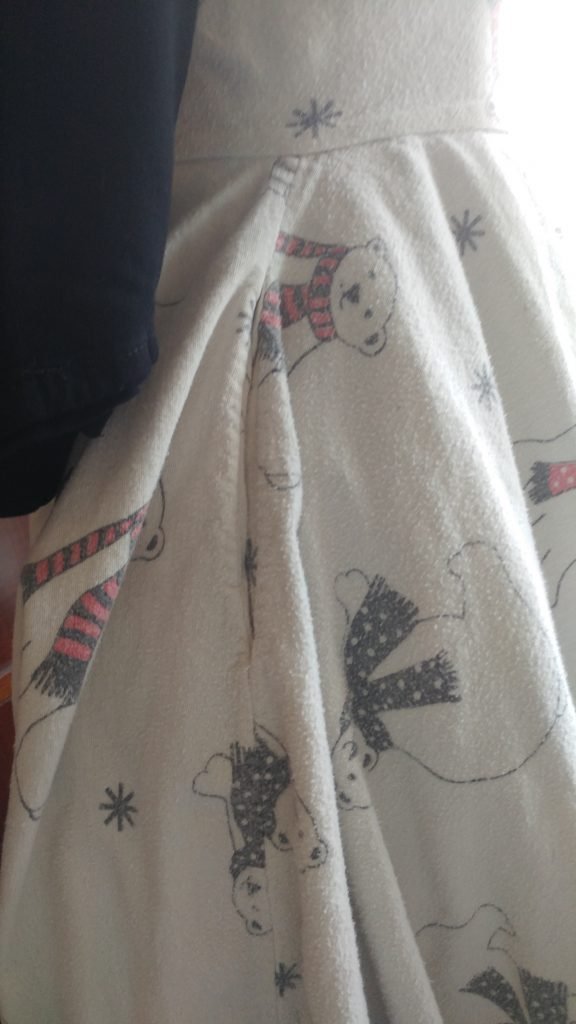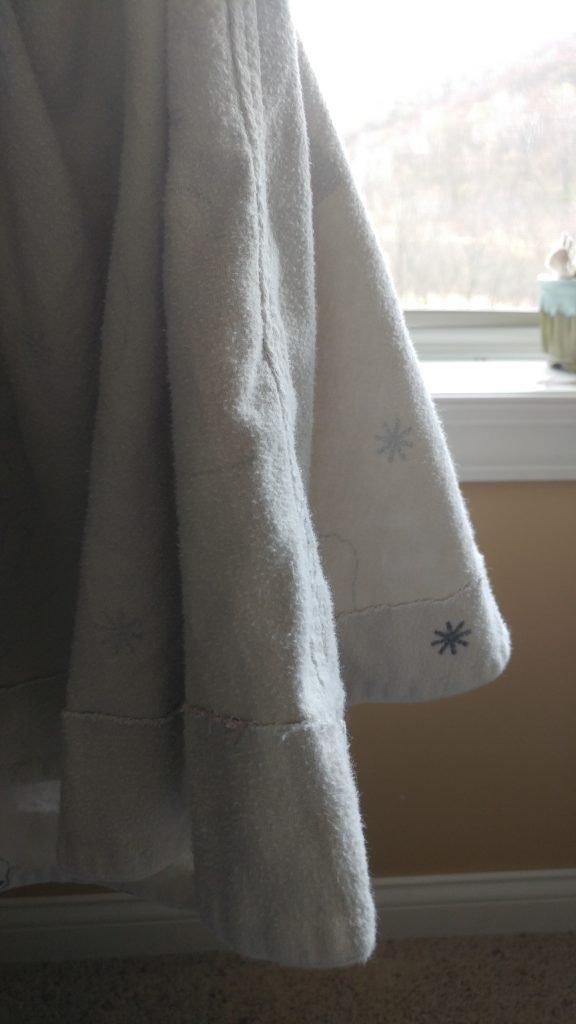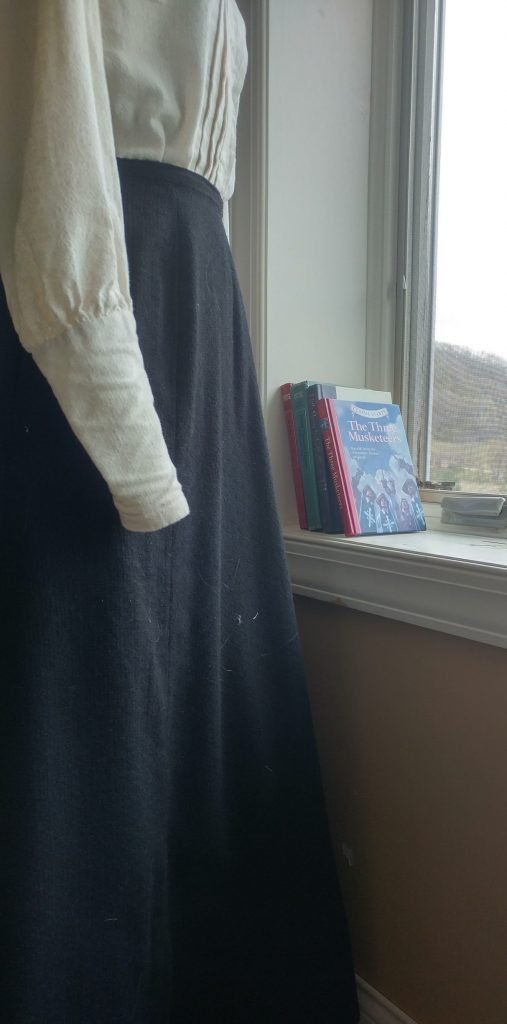
This skirt was made out of two yards of wool that I found at a thrift store. It was lined with black cotton since the wool is slightly see through. The cotton was flat-lined to the wool with long basting stitches to secure the layers together until the seams were stitched. If you sew them together with no basting you might get puckers, or pooling at the hem. The pattern for this skirt is from an Edwardian pattern book called the voice of fashion. It is scaled up using rulers that correspond to your waist measurement to get the correct fit.
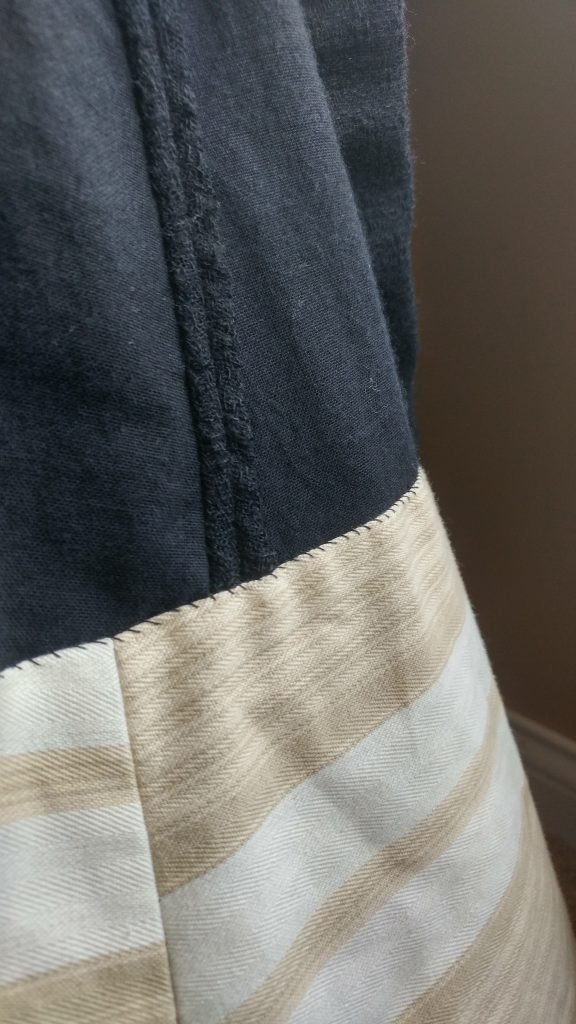
The seams were sewn together then felled down to cover the raw edges. Skirts in this time were often just overcast of left raw, but the wool I was using was very prone to fraying so I decided to fell the edges this time.
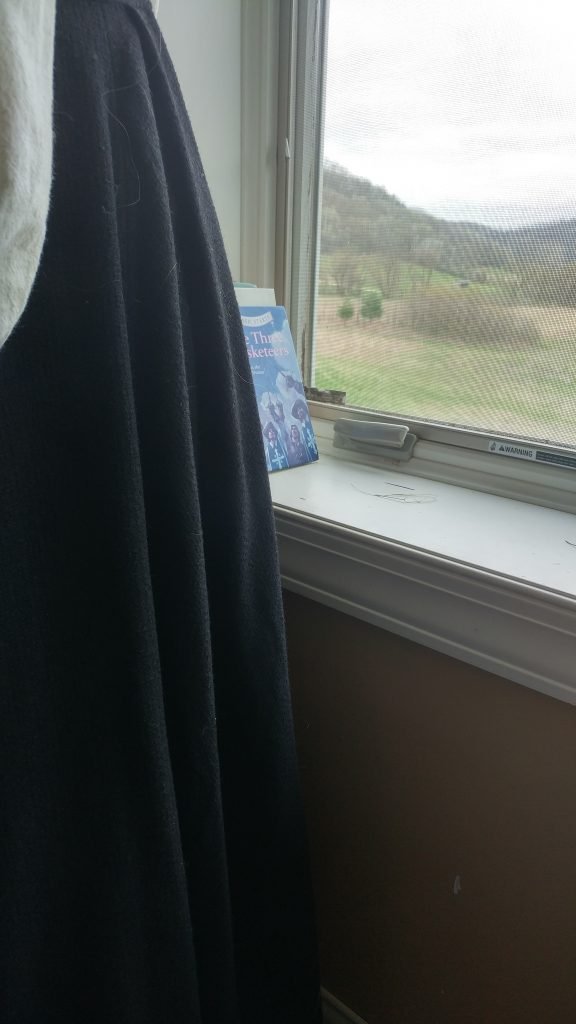
The skirt was then sewn to the waist band which I made slightly wider then usual just for a different look. I did one box-pleat at the back and sewed in the hooks and eyes.
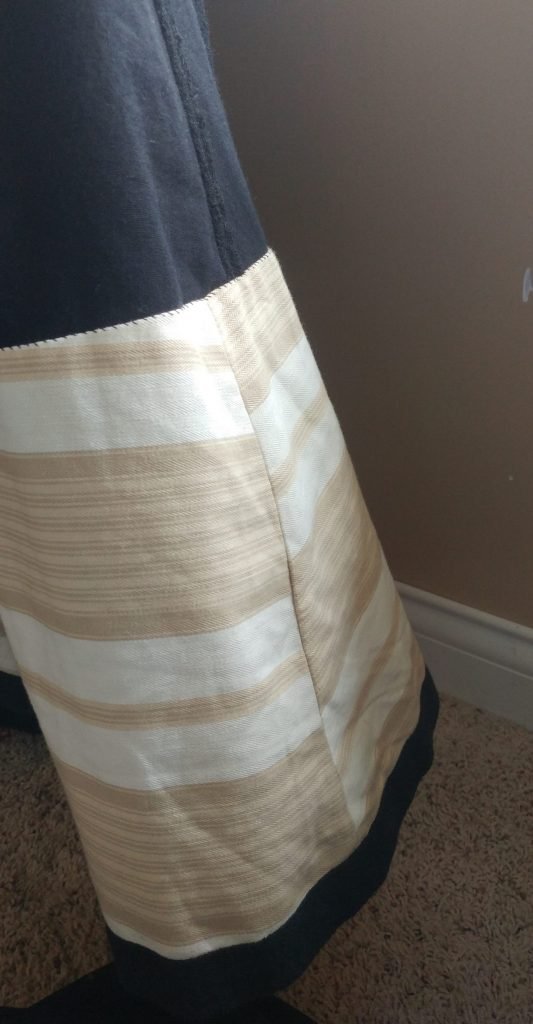
I let the skirt hang for a couple days for any bias edges to stretch before I installed the final hem. The facing was cut out of this stiff canvas fabric then sewn to the skirt only catching the lining and not the outer fabric. The black twill tape was sewn to the hem to prevent the hem edge from wear since the tape extends an eighth inch past the actual hem.





